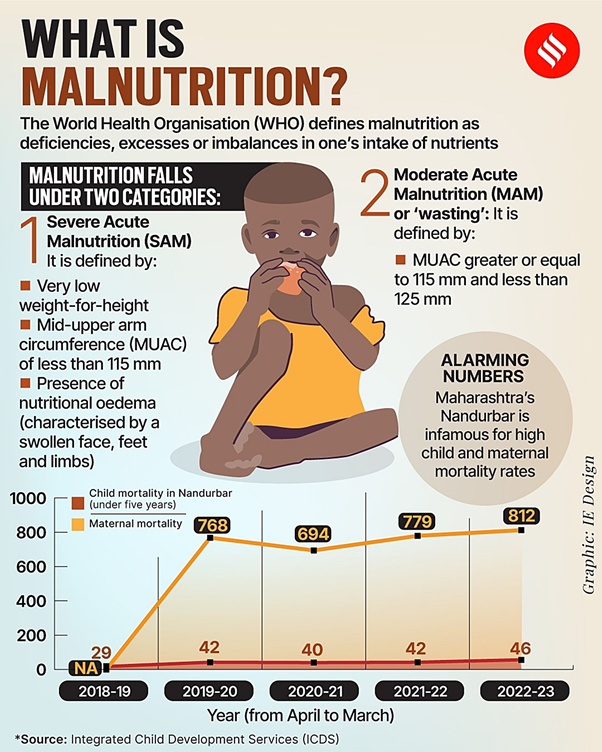

30th October 2023 (11 Topics)
Context:
The weighing scales are crucial to assess malnutrition in infants, pregnant women and new mothers. In its battle against malnutrition, ‘Nandurbar’ is short of a key weapon: digital weighing scales.
- The issue of lack of weighing scales in the district was highlighted in September by the government-appointed Tribal Project Core Committee
What is the issue?
- The issue is lack of weighting machines which is required to take the weights of pregnant mothers, new mothers, new born babies and children under 3 years of age.
- Weighing machines provides accurate picture of outcomes which are intended to achieve by minimising the prevalence of maternal mortality, infant mortality and other nutritional support under ICDS etc.
- The World Health Organisation (WHO) recommends the use of digital weighing scales for monitoring maternal and infant health.
- With a population of nearly 16 lakh, of which 70 per cent are from tribal communities, Nandurbar ranks the lowest in the state on the Human Development Index — a statistical measure of key dimensions of human development, including life expectancy.
- The scales are required to weigh infants, children and pregnant women and this data is used by anganwadi and ASHA workers to provide nutritional support in the hilly region.
Glaring data:
- Integrated Child Development Services (ICDS), a government programme that provides health and education services to children under the age of six and their mothers which shows that;
- Around 2,094 (or 1.14%) of the 1,82,318 children screened in Nandurbar in June were found to have Severe acute malnutrition (SAM) and
- 14,347 (or 7.87%) Moderate Acute Malnutrition (MAM) – both conditions that have serious consequences, including mortality and impaired intellectual development.
- Between April 2019 and March 2020, 768 children under the age of five died in the district.
- The number dipped to 694 in 2020-21, only to rise to 779 in 2021-22 and to 812 in 2022-23.
- ASHA workers at PHCs and sub-centers are also required to weigh pregnant women, new mothers and newborns up to six weeks after delivery to assess their overall health and nutritional status and ensure appropriate interventions if malnutrition is detected.
Challenges posed by the issue:
- The risk of a new-born being malnourished is higher if the mother is malnourished during pregnancy.
- A mother’s nutritional status directly impacts the developing foetus.
- Inadequate maternal nutrition can lead to low birth weight, preterm birth and other health complications for the baby.
- ASHA workers say monitoring pregnant women is important since maternal deaths are on the rise in the district.
|




